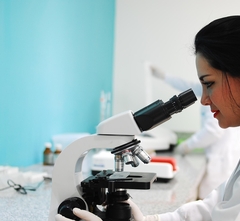Global Scans · Synthetic Biology & Biotechnology · Weekly Summary

- [New] An IUCN moratorium on synthetic biology would have no legal force, but it could still have far-reaching effects. New Scientist
- [New] China has placed significant emphasis on synthetic biology and gene editing technologies, making them strategic priorities in the 13th and 14th Five-Year Plans. PubMed Central (PMC)
- [New] Crispr-based therapies will be an integral component for any cure for HIV in the future. Chemistry World
- By adopting AI, CRISPR, precision medicine, and mRNA platforms, the best biotech companies are driving innovation that will define the next era of global healthcare. Biomorph Lifesciences Pvt. Ltd.
- Venture capital investment in cellular agriculture will exceed $50 billion over the next five years, driving accelerated innovation and scaling. Futurist Speaker on AI Leadership, Future of Work, Futu
- Deep Learning, the fastest-growing subsegment, is projected to surpass USD 750 million by 2032 due to adoption in microbiome prediction and nutrient absorption modeling. CNHI News
- By 2028, gene editing and cell therapies will move from rare diseases to common conditions. Futurist Speaker on AI Leadership, Future of Work, Futu
- Through the magic of Silicon Valley, America will lead in the industries of the future: blockchain, humanoid robots, quantum, synthetic biology, 3D printing, and of course AI. Information Technology and Innovation Foundation | ITIF
- Cellular agriculture will mature to the point where any animal product - from bluefin tuna to rare Kobe beef-can be cultivated from a small cell sample without any animal slaughter. Futurist Speaker on AI Leadership, Future of Work, Futu
- Scientists from the ARC Centre of Excellence in Synthetic Biology at Queensland University of Technology have developed a novel and potentially groundbreaking saliva test that targets one particular protein biomarker, S100A 7 - which could make early diagnosis and treatment a reality. New Atlas
- By 2045, gene therapies will become standard treatment for hundreds of genetic conditions, with CRISPR-based technologies offering precise corrections to faulty DNA. Futurist Speaker on AI Leadership, Future of Work, Futu
- The Danone OneBiome Lab will serve as a global hub for microbiome science, nutrition, and digital health, reinforcing Danone's pioneering role in shaping the future of food and health. Danone
- Demographic and health trends (aging populations, global health threats), coupled with rapid scientific advances (genomics, gene therapy, mRNA, synthetic biology, etc.), will continue to drive growth in biotech R&D and production. IntuitionLabs
- Global meat consumption is projected to rise by around 1.4% annually, highlighting the need for alternatives such as cellular agriculture, which enables the production of animal-derived food products in vitro through tissue engineering. PubMed Central (PMC)
- CRISPR Therapeutics expects to initiate a clinical trial of CTX460 in mid-2026. Investing News Network (INN)
- CRISPR Therapeutics is advancing a pipeline of in vivo gene editing candidates addressing major unmet needs in cardiovascular, metabolic and rare diseases using its proprietary, de-risked lipid nanoparticle delivery platform. Investing News Network (INN)
- Danish researchers have used CRISPR-Cas9 with rAAV6 - mediated HDR to correct a 7-bp GATA2 deletion in patient-derived HSPCs, restoring engraftment potential with > 80% editing efficiency. CRISPR Medicine
- By technology, the CRISPR/Cas12 technology segment is projected to grow at a notable CAGR of 12.3% between 2025 and 2034. Yahoo Finance
- By gene editing modality, the in vivo editing segment is growing at a strong CAGR of 12.5% between 2025 and 2034. Yahoo Finance
- A top United States regulator plans to unveil a faster approach to approving custom gene-editing treatments, a move designed to unleash a wave of industry investment that will yield cures for patients with rare diseases. financialpost
- Breakthroughs in science will create new hiring spurts: for example, if CRISPR-based gene therapies begin to succeed clinically (the first approvals could happen around 2025-2026 for diseases like sickle cell), an entire subindustry of gene editing therapies could blossom. / USA IntuitionLabs
- Growing access to advanced biotechnology and synthetic biology tools-amplified by AI and DIY bio movements-raises the risk of nonstate actors developing biological weapons. Global Biodefense
Last updated: 13 December 2025
